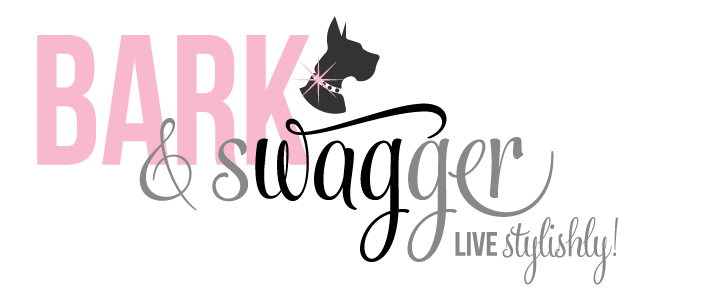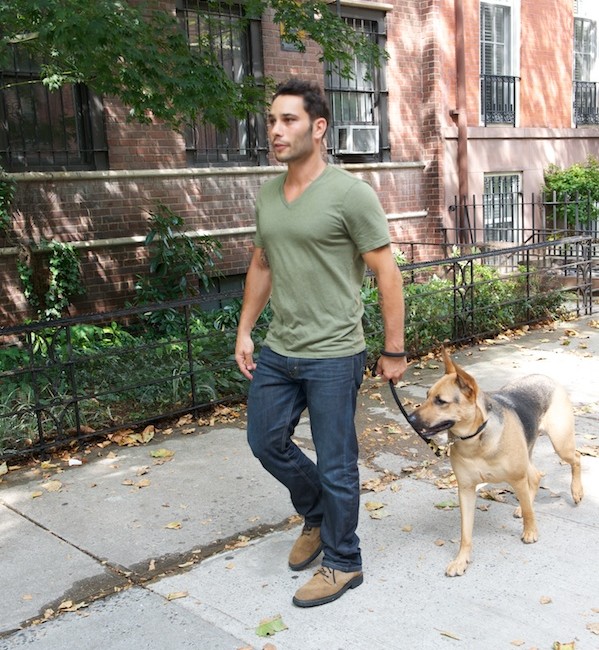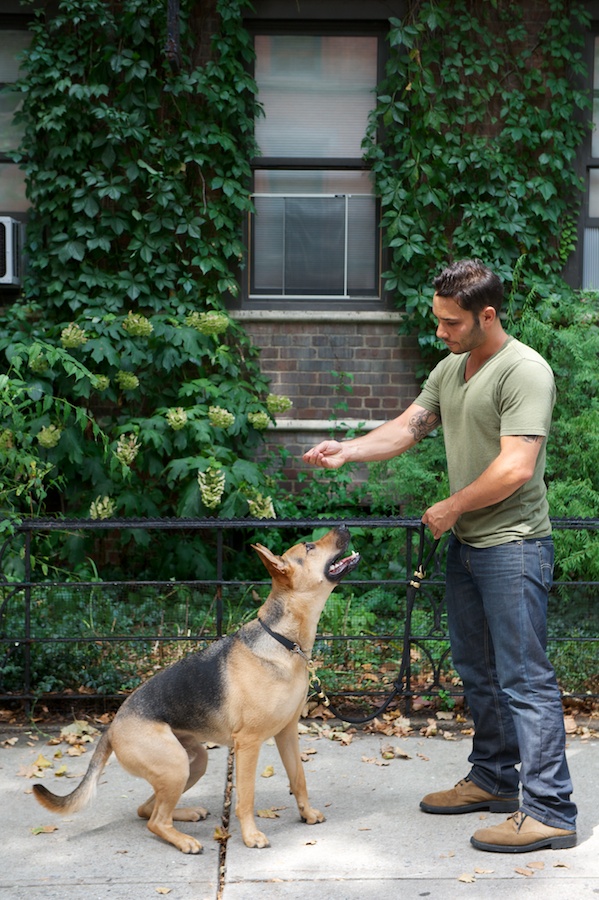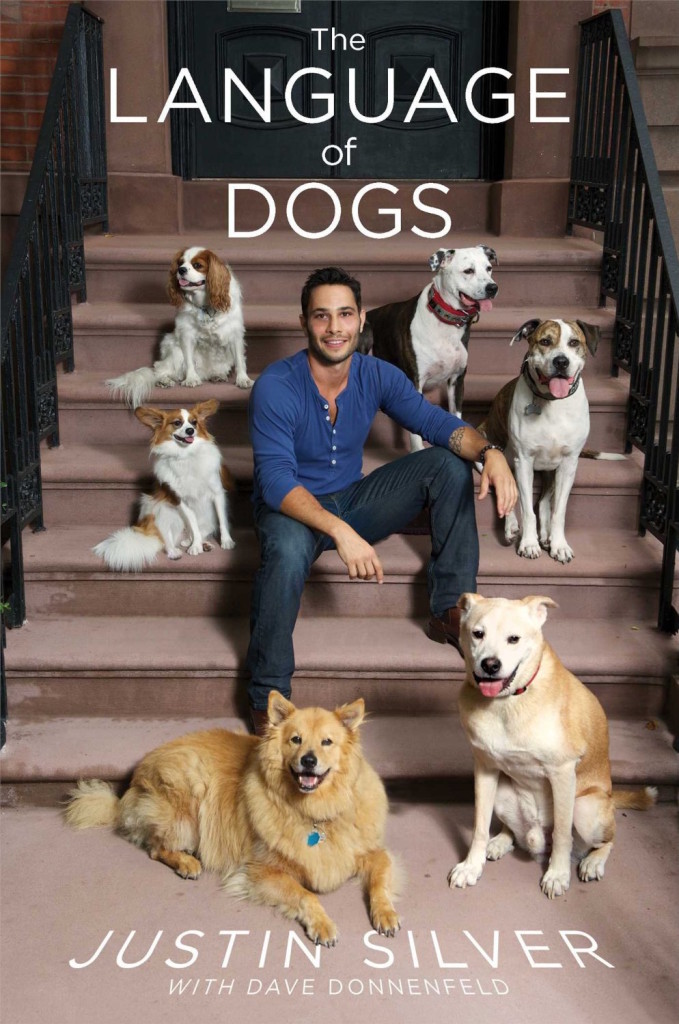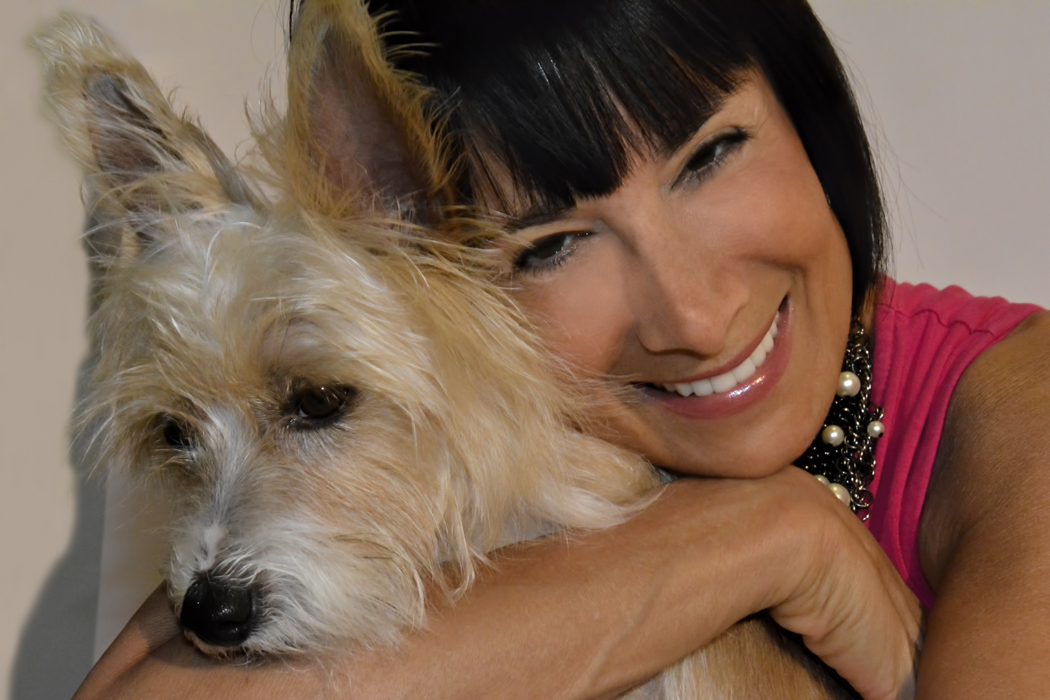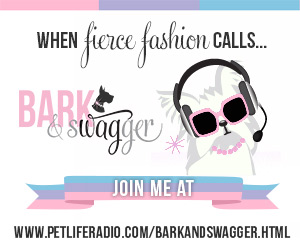We’re at the halfway mark in our 10-week training series, Tuesdays with Justin, and if you couldn’t tell by now, Justin Silver and partner, Dave Donnenfeld’s training philosophy is as much about us as about the dog. We are the key to a well-behaved pup, and having the right energy is the foundation. So, let’s get right into it with this week’s training.
At the end, check out the details for entering this week’s giveaway to win a copy of Justin and Dave’s new book, The Language of Dogs, a very helpful and informative read offering tips, advice and suggested tools of dog training utilizing Justin’s philosophy. It really helped us with our terrier terror, Jasper, and I think it can help you, too!
Keeping it Fluffy Or Relaxed Excitement
by Justin Silver with Dave Donnenfeld
As mentioned in an earlier post, the concept of “keeping it fluffy” can’t be overstated. When we are teaching dogs, it is up to us to promote learning and not let our own limitations be a distraction. Redirecting a dog’s nervous energy on to a command, setting the pace on a walk while avoiding a tug of war, teaching recalls to a pup that likes to forget his name or calmly attempting to walk past a rolling skateboard is actually, all about you.
Dog owners have become sensitized to their dog’s misbehavior and this puts them on edge, creating tension-inducing reactions. In addition, we need to learn to perform some paradoxical behaviors:
- Create a level of excitement and enthusiasm while…
- Not being distracting, overbearing AND…
- Remaining calm and clear in tone and body language, while
- Trying to forget any unsuccessful history you may have.
How do you create a happy, excited environment while sounding enthused but calm and clear? You practice until you find the sweet spot. Some dogs need more enthusiasm and some dogs need more calm. Athletes have been doing this forever. They need preternatural focus, while keeping their bodies relaxed in order to perform their best. Too much focus and they get stiff and too lax, they can’t react in time. This is not professional sports, but it is pretty difficult to get the hang of at first.
In the beginning, the real culprit is lack of awareness in both body and voice.
Tension Check:
- Is the leash tight? Loosen the grip.
- Is your body tense – at ease, soldier.
- Are you anticipating bad behavior? Good thoughts, please.
Body Check:
- Stand tall, but not stiff.
- Don’t bend over to address your dog when things don’t go right.
- Hand signals are delivered between the belt line and the chest.
Command Central:
- The command word is said simultaneously with the hand signal.
- Marking words, e.g. “good boy,” are said as you dispense the reward.
- Say it once -“Sit, sit, sit, sit, sit,” is a different command than “sit.”
- Don’t make dogs search for keywords in long sentences.
It can be disheartening when problems persist, but don’t despair. Once you realize it is you and not your dog that needs to adjust, it is empowering to know that, with the right tools, you have the opportunity to change it.
See you next week!
The Giveaway
Enter to win a copy of Justin & Dave’s new book, The Language of Dogs, a great dog training at home manual that’s easy to read and chock full of practical training tips that work. I reviewed it in an earlier post here.
To enter, just join the Bark & Swagger family! If you’re already a member, you’re eligible! The giveaway begins Tuesday, May 26 at 7am EST and ends Sunday, May 31 at 11:59pm EST. Each week, we’ll announce a new winner and start the giveaway again.
Week 4’s winner is Angela C. Congratulations, Angela!
To get more info, great tips and fun pictures, visit Justin on:
